布隆过滤器
http://pages.cs.wisc.edu/~cao/papers/summary-cache/node8.html
A Bloom filter is a method for representing a set A
of n elements (also called keys) to support membership queries. It was invented by Burton Bloom in 1970 [6] and was proposed for use in the web context by Marais and Bharat [37] as a mechani sm for identifying which pages have associated comments stored within a CommonKnowledge server.

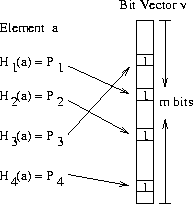
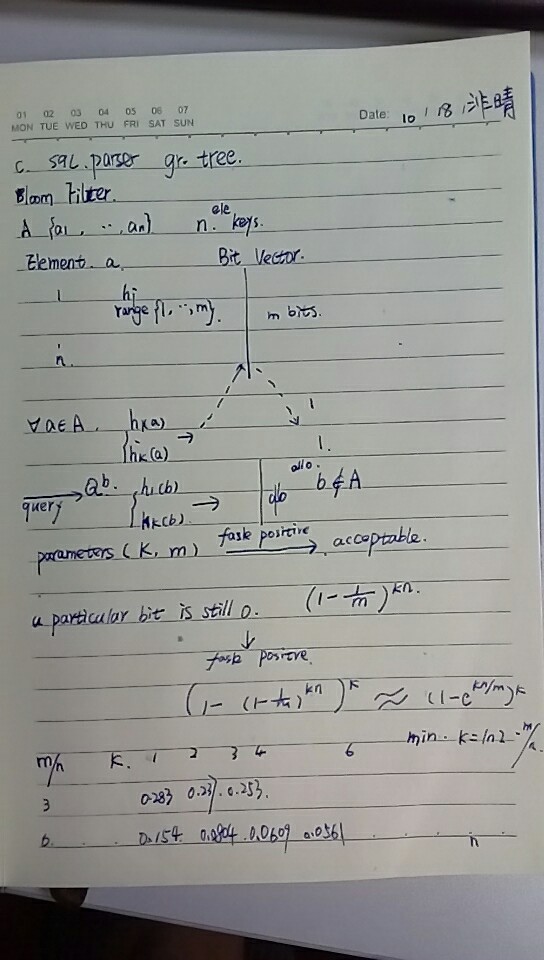
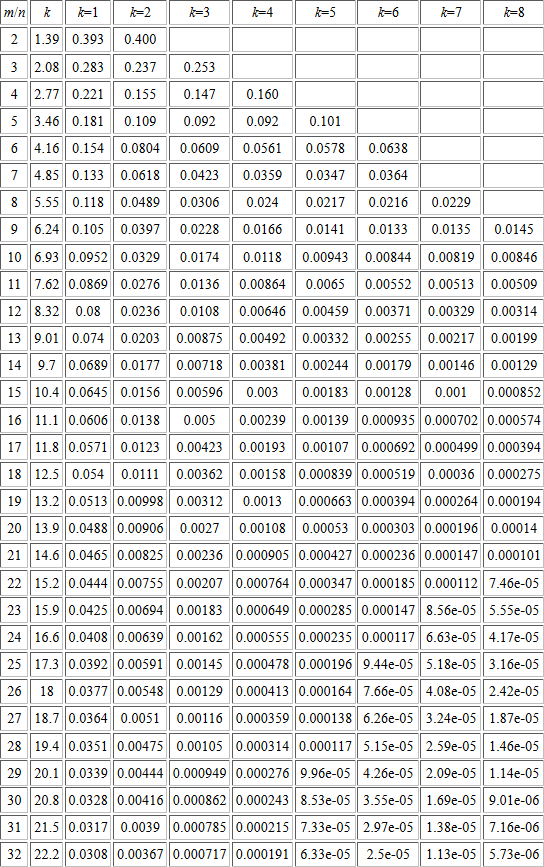
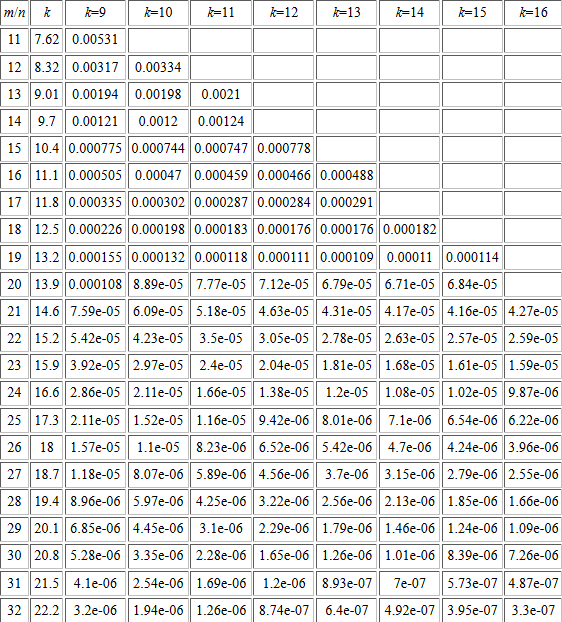
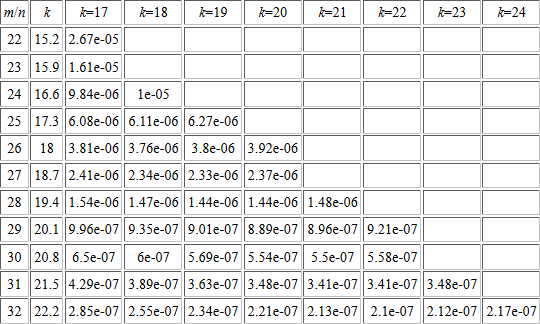
Bloom filter used to speed up answers in a key-value storage system. Values are stored on a disk which has slow access times. Bloom filter decisions are much faster. However some unnecessary disk accesses are made when the filter reports a positive (in order to weed out the false positives). Overall answer speed is better with the Bloom filter than without the Bloom filter. Use of a Bloom filter for this purpose, however, does increase memory usage
https://en.wikipedia.org/wiki/File:Bloom_filter_speed.svg
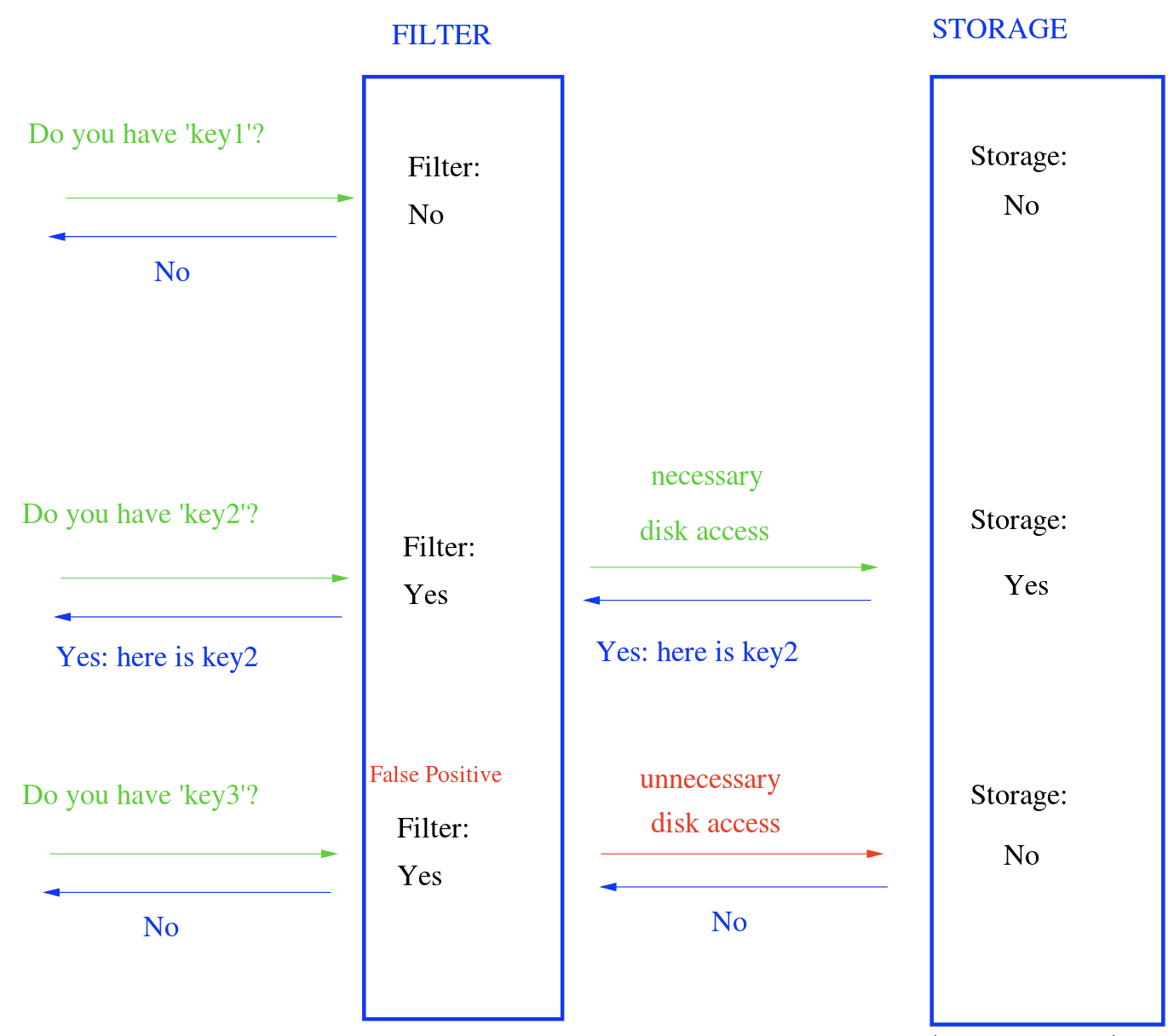
A Bloom filter with a 1% error and an optimal value of k, in contrast, requires only about 9.6 bits per element, regardless of the size of the elements. This advantage comes partly from its compactness, inherited from arrays, and partly from its probabilistic nature. The 1% false-positive rate can be reduced by a factor of ten by adding only about 4.8 bits per element.